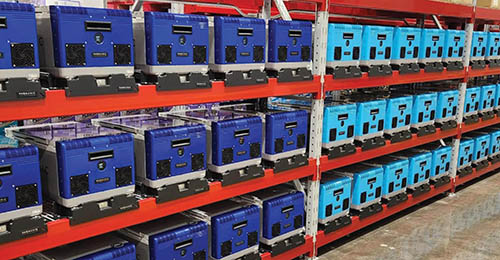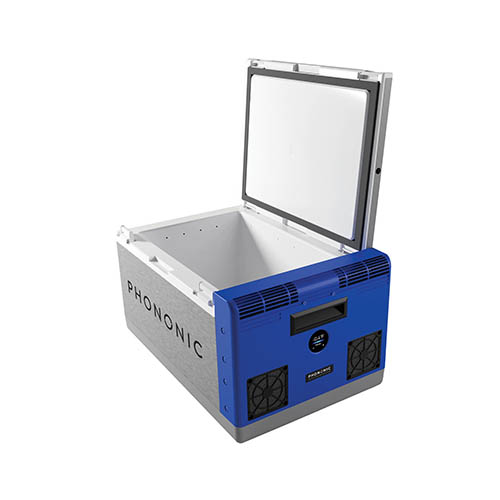— By Dana Krug —
The future of retail: technology-forward, customer-centric and efficient.
For years, consumer behavior has been the driving force behind the rapid growth of omnichannel retail. Today, this trend has become more pronounced than ever, with 73% of shoppers regularly engaging with multiple channels throughout their buying journey. The pandemic further accelerated this shift, making curbside pickup and other omnichannel conveniences a standard expectation rather than a luxury.
Now, the future of retail is being shaped by the evolving preferences of Gen Z and millennial shoppers, who increasingly favor in-app purchases and seamless digital interactions. These consumers expect to engage with retailers across multiple touchpoints, whether through social media, mobile apps, websites or physical stores, demanding a more connected and flexible shopping experience.
The continued rise of omnichannel is not just a passing trend — it’s a proven driver of success. Recent strong earnings reports from major retailers highlight the value of investing in omnichannel strategies. Research confirms that companies prioritizing omnichannel engagement retain an impressive 89% of their customers, while those that fail to adapt struggle to retain just 33%. In today’s competitive retail landscape, embracing omnichannel innovation is no longer optional — it’s essential for long term growth and customer loyalty.

The rapid expansion of omnichannel in retail has laid the foundation for what is now widely recognized as the “store of the future” — a model that seamlessly integrates digital and in-store experiences to enhance convenience, efficiency and customer satisfaction. On December 13, 2022, the Sam’s Club in Grapevine, Texas, was devastated by an EF-1 tornado, forcing the retailer to temporarily close its doors. However, what began as a setback quickly transformed into an unprecedented opportunity. Rather than simply rebuilding, Sam’s Club reimagined the entire shopping experience, leveraging the latest advancements in technology to create a more innovative, customer-centric and frictionless environment. The new store not only prioritizes efficiency but also enhances convenience for shoppers, setting a new benchmark for the future of retail.
The newly rebuilt store opened in October of 2024. Customers of the revamped store were treated to a one-of-a-kind experience in this first-of-its-kind all-digital store. Whether it was ordering from a pizza robot that can make up to 100 pizzas per hour or a new sushi island, there is seemingly something for everyone. The store also added an expanded 6,000-square-foot area dedicated to online order fulfillment. How well does the store address some of the biggest challenges retailers face, including inventory management, reducing operational costs and enhancing the overall customer experience? These are critical factors that can determine a store’s efficiency and success. By examining its strategies, technologies and innovations, we can gain a better understanding of how it navigates these pain points and whether it sets a new standard for the retail industry. So, let’s take a closer look.
An automated inventory management system assists associates in remaining on top of it through a picture-enabled system that provides regular updates to an inventory specialist. One of the most novel attributes of this story is an opportunity for customers to shop without having to wait in line to check out, eliminating the need for cashiers. Yes, in this store customers check themselves out using the scan-and-go function in the Sam’s Club app. Once customers have paid, they make their way through the doorways where their purchases are verified, and they exit the store.
Recognizing the rapid expansion and growing significance of omnichannel retail, the store made a strategic investment in proprietary freezer totes. These innovative totes leverage solid state technology that delivers cooling completely devoid of harmful HFCs found in traditional refrigeration. They offer retailers the opportunity to cool e-grocery orders in an efficient and eco-friendly manner. These particular totes are a smarter alternative to traditional, large-scale refrigeration systems. Unlike legacy cooling solutions — which are costly, rely on environmentally harmful refrigerants and lack adaptability — modular totes deliver flexibility, scalability, sustainability and with IoT ensure cold chain compliance, food safety and ultimately customer satisfaction.
Sustainable modular solutions cool only the necessary portions of an order, or specific orders, cutting energy costs while also saving time on curbside delivery and reducing the space needed for staging orders. Temperature-controlled electronic totes can replace retrofitted backroom coolers, reducing the overall cooling footprint by 50% or more.

Thanks to their modular design, cooling totes allow even smaller retailers to achieve cost savings by scaling their investment based on need, rather than committing to large capital expenditures for a full overhaul of their omnichannel operations. Modular totes come with IOT ability and can proactively detect potential operational inefficiencies, which can lead to significant cost savings.
With rising operational costs posing challenges for retailers across the industry, the need for greater efficiency has never been more critical. Maximizing space utilization for omnichannel orders, reducing utility expenses and streamlining labor requirements are all essential strategies for maintaining profitability while enhancing the customer experience. By integrating advanced technology, retailers can automate and optimize these processes, ensuring smoother operations and cost-effective solutions.
Sam’s Club Grapevine stands as a prime example of this forward-thinking approach. By embracing innovative technologies, the store has redefined what it means to operate efficiently in the modern retail landscape. From seamless checkout solutions to energy-efficient systems, every aspect of the store has been designed to reduce waste, lower costs and improve overall functionality. With all these advancements working together, Sam’s Club Grapevine isn’t just a retail space — it’s a glimpse into the future of shopping.
— Dana Krug is the senior vice president of the cold chain fulfillment division at Phononic. He has served as a visionary behind the way Phononic is creating a sustainable ecosystem for cold chain micro fulfillment in the food and beverage industry. From his original vision, he commercialized the first thermoelectric point-of-sale refrigerator, the first and only thermal electric freezer, and now the first sustainable actively cooled freezer & refrigerator tote.

